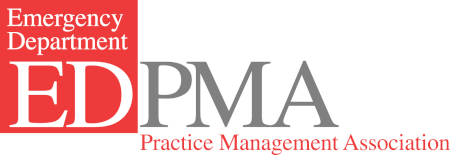
Quality Measures Subcommittee
Partnership for Quality Measurement (PQM) E&M Guidebook Comments Due July 30
-
Partnership for Quality Measurement (PQM) E&M Guidebook Comments Due July 30
On June 30, Battelle, whose Partnership for Quality Measurement (PQM) recently took over the NQF’s contract as the consensus-based entity that vets measures for use in federal programs, hosted a webinar titled, “Introduction to PQM and the Endorsement & Maintenance (E&M) Process.” If interested, copied below are notes from this session. Feel free to share with other members who might be interested. After sitting through this 2-hour webinar, my overall impression is that they’ve done little to move away from the NQF’s administratively complex and bureaucratic process, other than a few minor improvements, adjustments, and name changes (but I guess the devil is in the details).
Reminders about upcoming comment and nomination periods:
- The PQM
recently released an E&M Guidebook that presents a more detailed
description of the processes summarized on today’s webinar. This
Guidebook is open for public comment through July 30.
More information can be found here. - The PQM
also released a PRMR-MSR Guidebook, which is open for public comment
through July 21. More information can be found here.
The PRMR process will replace the Measures Application Partnership
(MAP) process. The MSR process is an extension of an existing process that
results in recommendations about measures that should be removed from
federal programs. On July 10, PQM will host a webinar
on these two processes. Registration for that webinar can be
found here. - The PQM
also just announced that it is accepting committee nominations through July
30. Individuals can self-nominate to serve on the E&M
Committee. Organizations and individuals can submit a nomination to serve
on committees supporting PRMR and MSR. More information is
available here.
Note that all nominees must be members of the PQM, but membership
is free.
*If Dr. Tinloy is interested in continuing to participate in the MAP process, then he should nominate himself for the PRMR, noting his past appointment.
Notes from 6/30/23 Introduction to PQM and the E&M Process Webinar
To achieve a 6-month Evaluation and Maintenance (E&M) process while maintaining high standards for transparency and rigor, Battelle has enacted several key enhancements over NQF process: 1) leveraging the Scientific Methods Panel (SMP) to advance measure science; 2) retiring the Consensus Standards Approval Committee (CSAC); 3) establishing a more robust and transparent appeals process 4) leveraging a Novel Hybrid Delphi and Nominal Groups (NHDNG) technique (rigorous, evidence-based approach to build consensus and prevent loud voices from taking over); 5) reducing the number of E&M committees; and 6) conducting the pre-evaluation public commenting concurrent with other necessary E&M activities.
Overall, there is a bigger emphasis on public comment, more timely and transparent decision-making, fewer committees, more experts vetting, more robust vetting process. Measure reviews will take place within 6 months.
Structure:
- There were
14 E&M Committees under NQF, now will be 5, which follow the patient’s
journey: 1) Primary Prevention; 2) Initial Recognition and
Management; 3) Management of Acute Events, Chronic Disease, Surgery,
Behavioral Health; 4) End-of-Life Care, Rescue, Specialized Interventions;
5) Cost and Efficiency.
- There will
be 5 projects per cycle (9-11 measures per cycle, two cycles per year), each having a committee that evaluates, discusses, and
assigns ratings for measures under endorsement review - PQM will
bring in additional voices on an ad hoc basis. - Each
E&M Project committee will have about 60 members - Each
E&M Project Committee will be divided into:
- Advisory
Group: reviews and provide ratings and written recommendations on
measures prior to the Recommendations Group endorsement meeting.
Advisory Group members are encouraged to attend Recommendations
Group endorsement meeting to listen to the Recommendations Group
discussions and to revote on measures during the meeting. - Recommendations
Group: reviews and provides ratings and written recommendations on
measures prior to the Recommendations Group endorsement meeting. Areas of
disagreement (i.e., lack of consensus) identified from the initial
measure ratings from both groups will inform the Recommendations Group
discussions during the subsequent Endorsement Committee Review
meeting. Recommendations Group members will also revote on measures
during the meeting. - Essentially,
both groups provide recommendations and any differences are brought
forward at endorsement meeting. In the end, the entire group will
vote on an endorsement decision, but the clinical vetting would have
already taken place
-
This discussion was modified 2 years ago by
 Cathey Wise.
Cathey Wise.
eur02.safelinks.protection.outlook.com
Home | Partnership for Quality Measurement
Home | Partnership for Quality Measurement
- The PQM
Log in to reply.
